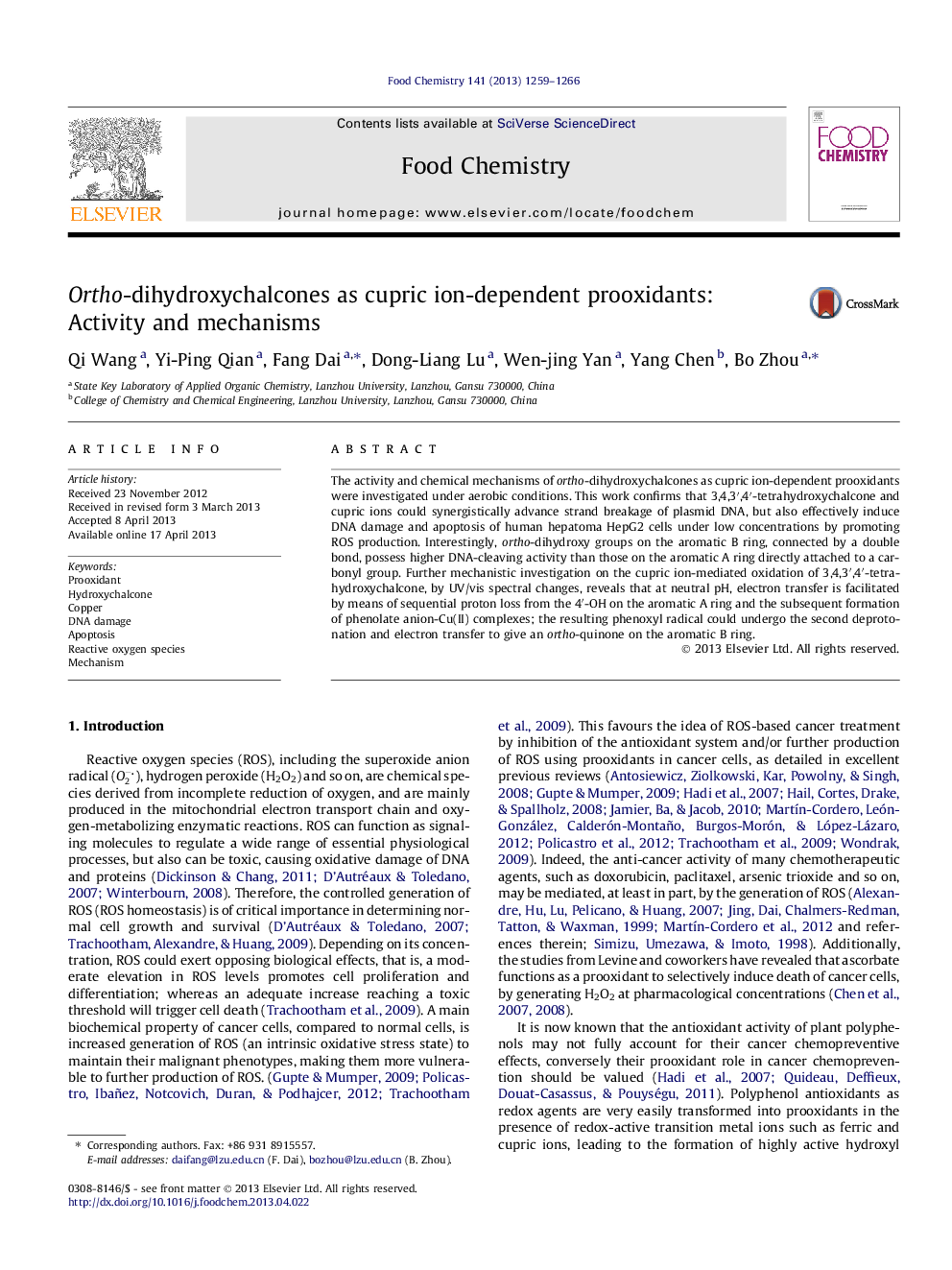| کد مقاله | کد نشریه | سال انتشار | مقاله انگلیسی | نسخه تمام متن |
|---|---|---|---|---|
| 1187152 | 963456 | 2013 | 8 صفحه PDF | دانلود رایگان |

• Activity and mechanisms of o-dihydroxychalcones as Cu(II)-dependent prooxidants were studied.
• They can induce DNA damage and apoptosis of HepG2 cells under low concentrations.
• Sequential proton loss electron transfer steers the oxidation process.
• Relative sensitivity and role of catechol moieties on A and B rings for the oxidation were explored.
• This work should be helpful for understanding ROS or prooxidant-based cancer treatment.
The activity and chemical mechanisms of ortho-dihydroxychalcones as cupric ion-dependent prooxidants were investigated under aerobic conditions. This work confirms that 3,4,3′,4′-tetrahydroxychalcone and cupric ions could synergistically advance strand breakage of plasmid DNA, but also effectively induce DNA damage and apoptosis of human hepatoma HepG2 cells under low concentrations by promoting ROS production. Interestingly, ortho-dihydroxy groups on the aromatic B ring, connected by a double bond, possess higher DNA-cleaving activity than those on the aromatic A ring directly attached to a carbonyl group. Further mechanistic investigation on the cupric ion-mediated oxidation of 3,4,3′,4′-tetrahydroxychalcone, by UV/vis spectral changes, reveals that at neutral pH, electron transfer is facilitated by means of sequential proton loss from the 4′-OH on the aromatic A ring and the subsequent formation of phenolate anion-Cu(II) complexes; the resulting phenoxyl radical could undergo the second deprotonation and electron transfer to give an ortho-quinone on the aromatic B ring.
Journal: Food Chemistry - Volume 141, Issue 2, 15 November 2013, Pages 1259–1266